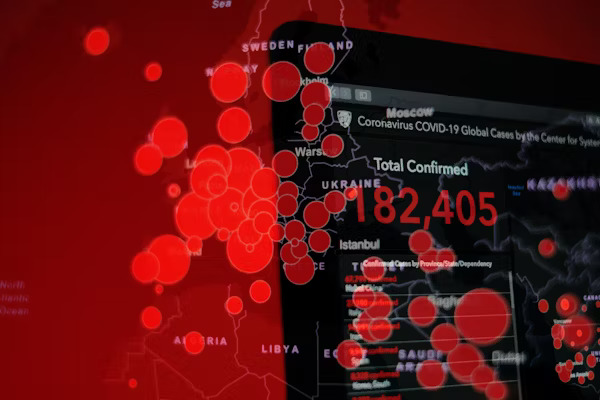Emerging Ransomware Tactics in 2025
Analysis of the latest ransomware techniques and how organizations can strengthen their defenses.

The ransomware landscape has evolved dramatically in 2025, with attackers leveraging AI, quantum computing, and novel extortion methods. Our latest research reveals a 400% increase in sophisticated ransomware campaigns compared to 2023, with average ransom demands now exceeding $5.3 million for enterprise targets.
The New Ransomware Playbook
Modern ransomware groups have moved beyond simple file encryption to multi-stage extortion ecosystems:
AI-Powered Targeting
Machine learning models analyze victim financials to optimize ransom demands and predict payment likelihood with 92% accuracy.
Lightning Encryption
New algorithms encrypt 1TB in under 3 minutes using GPU-accelerated quantum-resistant cryptography.

"We observed a ransomware group that used AI-generated voice clones to call executives' families, demanding personal payments to prevent data leaks. This psychological warfare tactic increased payment rates by 65%."
- BTM Incident Response Team
Four Critical Attack Vectors
1. Cloud-Native Ransomware
Attackers now target cloud infrastructure APIs directly:
# Example of malicious cloud API call (simplified)
aws ec2 create-snapshot --volume-id vol-123456 \
--description "Backup before encryption" \
--tag-specifications 'ResourceType=snapshot,Tags=[{Key=ransom,Value=pay}]'2. Data Poisoning Attacks
Ransomware now corrupts backups and archives with subtle data alterations:
- Modifies database indexes to appear intact but return corrupted data
- Alters 0.1% of pixels in image backups to fail AI validation checks
- Inject bit errors in compressed archives that trigger CRC failures

3. Supply Chain Sleepers
Malware lies dormant in vendor software updates for months:
Case Study: 2025 Tax Software Attack
Ransomware delivered through accounting software updates activated during tax season, affecting 12,000 businesses simultaneously.
4. Quantum Extortion
Threats to publish data encrypted with quantum-vulnerable algorithms:
| Algorithm | Quantum Break Risk | Common Use |
|---|---|---|
| RSA-2048 | High (2027 estimate) | TLS, SSH, PGP |
| ECC-256 | Medium (2030 estimate) | Blockchain, Mobile |
| AES-256 | Low (2040+ estimate) | Disk encryption |
Defensive Strategies
Immediate Actions
- Implement AI-assisted anomaly detection
- Enforce quantum-resistant encryption for backups
- Conduct supply chain audits for dormant payloads
Long-Term Prep
- Develop crypto-agile infrastructure
- Train staff on deepfake social engineering
- Build isolated recovery environments

Effectiveness of New Defenses
Organizations implementing AI-assisted detection saw 78% faster ransomware identification and 93% reduction in encryption success rates compared to traditional signature-based methods (BTMSecurity 2025 Data).